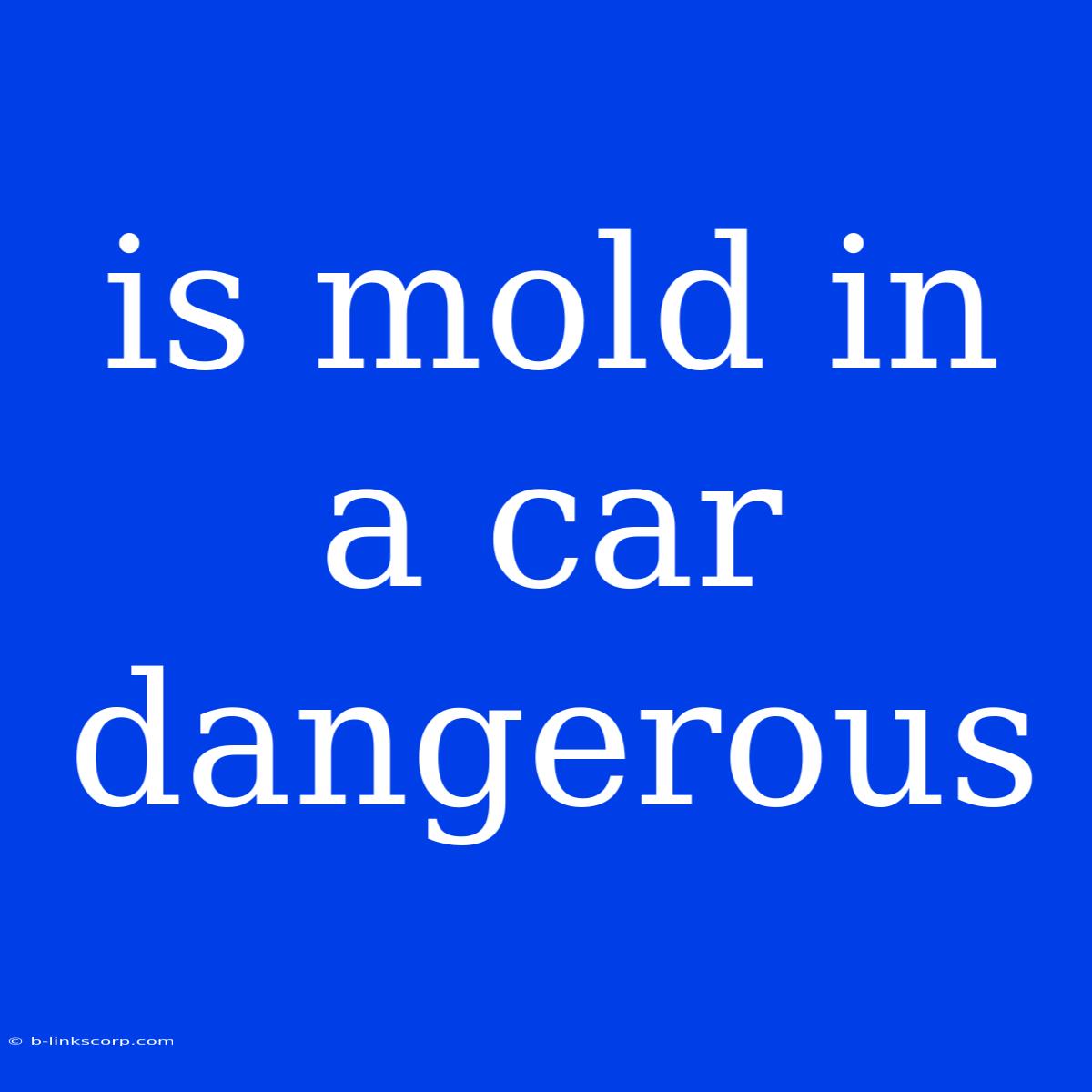Is Mold in a Car Dangerous? A Guide to Understanding the Risks and How to Deal with It
Mold in a car is not just an unpleasant sight, it can be a serious health hazard. While many think of mold as a problem confined to damp basements or bathrooms, its presence in a car can pose a significant threat to your well-being.
What is Mold?
Mold is a type of fungus that thrives in damp, humid environments. It reproduces through microscopic spores that are easily dispersed through the air.
Why is Mold in a Car Dangerous?
Mold in a car can lead to a number of health problems, especially for individuals with allergies or respiratory issues. Here's why:
1. Respiratory Issues: Mold spores can trigger allergies and asthma attacks. Breathing in these spores can cause symptoms like sneezing, coughing, wheezing, and difficulty breathing.
2. Skin Irritations: Direct contact with mold can lead to skin rashes, itchiness, and irritation.
3. Eye Irritation: Mold spores can also irritate the eyes, causing redness, itching, and tearing.
4. Mycotoxins: Some molds produce toxins, known as mycotoxins. Exposure to mycotoxins can have serious long-term health effects, including liver damage, respiratory problems, and even cancer.
Where does Mold Grow in a Car?
Mold can flourish in various parts of your car, especially in areas with dampness and poor ventilation:
- Under the Seats: Spilled drinks, crumbs, or even humidity can create ideal breeding grounds for mold under the seats.
- Carpet and Floor Mats: The carpet and floor mats can absorb moisture, making them a common place for mold growth.
- Air Vents: Mold can grow inside the air vents, spreading spores throughout the car with every blast of air.
- Sunroof and Windows: Condensation from the air conditioner or rain can accumulate in the sunroof and window seals, creating a breeding ground for mold.
- Leather Seats: Even leather seats can develop mold if they are exposed to moisture or humidity for extended periods.
How to Detect Mold in Your Car
Recognizing mold in your car is the first step toward dealing with it. Look for these signs:
- Musty Odor: A distinct damp, earthy smell is often the first indicator of mold.
- Visible Growth: Mold can appear as black, white, green, or gray spots or patches.
- Staining: Mold can stain surfaces, leaving discoloration on fabric, leather, or plastic.
How to Get Rid of Mold in Your Car
If you find mold in your car, taking action immediately is crucial.
- Clean the affected area with a mold-killing solution: You can find specialized mold cleaners at your local hardware store.
- Use a dehumidifier: A dehumidifier can help remove excess moisture from your car, preventing further mold growth.
- Open the windows and doors: Allowing air to circulate throughout your car can help dry out damp areas and discourage mold growth.
- Clean and dry all surfaces thoroughly: Pay particular attention to areas like the carpet, under the seats, and the air vents.
- Use a HEPA air purifier: A HEPA air purifier can remove mold spores from the air, improving the overall air quality inside your car.
Preventing Mold Growth
The best way to deal with mold in your car is to prevent it from growing in the first place. Follow these tips:
- Clean up spills and messes promptly: Don't let food or drink spills sit for long periods.
- Dry wet surfaces immediately: If your car gets wet, dry it thoroughly as soon as possible.
- Use a dehumidifier or moisture absorber: Keep a dehumidifier or moisture absorber in your car, especially during humid weather.
- Avoid leaving your car in damp or humid environments: If you live in a humid climate, park your car in a garage or under a covered space.
- Regularly clean and ventilate your car: Make it a habit to clean your car's interior regularly, including the carpets, seats, and air vents.
Conclusion
Mold in a car can be dangerous for your health, causing respiratory issues, skin irritation, and potential long-term complications. If you suspect mold in your car, take immediate action to remove it and prevent it from returning. By following these tips, you can create a healthier and more comfortable driving experience.

